City Announces New Downtown Plan
This week the City of Milwaukee announced its new downtown plan. The plans were informed by holding multiple public input sessions, numerous stakeholder input meetings, as well as a citywide survey. The planning process is long from over, as more pubic input is coming, and there are various levels of approvals still required, but if the key themes and catalytic projects are any sign, this has been a worthwhile effort that was informed by citizenry and good urban planning.
- A Distinct Downtown Center: Focus and Connections
- Place-Making in Downtown: Recognize Existing Places
- A Connected Downtown: Identify Key Connections Needed
- Density and Intensity: Infilling Density along Key Connections and Adding Demand Generators at New Places
In addition to the overall themes the plan lays out eight key catalytic projects:
- Broadway Connection – This project would include the development of a mixed-use complex at Broadway and Michigan Streets, improvements under I-794 and electronic visual effects, improved streetscaping with a center median, and a shared parking garage with ground-floor uses to better link Downtown with the Third Ward.
- Wisconsin Avenue Strategy – This project includes focused improvements on Wisconsin Avenue focused on a tightly defined area, developing a Downtown Retail Incentive Plan, coordinate with BID 21’s retail recruitment efforts, targeted code enforcement, identify buildings for rehabilitation, identify locations for residential infill, and create a Strategic Storefront Zone Overlay.
- The Station District – This project includes integrating the Intermodal Station with the new Streetcar network, intercity rail and intra-region bus services by creating a new Plaza at 4th St. and St. Paul, the relocation of the Milwaukee County Downtown Transit Center, the creation of a new Streetcar stop, and development of new commercial and residential buildings.
- Downtown Streetcar – This project includes the construction of a modern, electric streetcar system that would link important destinations with high density neighborhoods.
- Pere Marquette Square – This project includes the redevelopment of the Journal Sentinel block into a entertainment-oriented area, a public atrium, a tourist information center, and a curbless street between Pere Marquette Park and the Journal Sentinel block.
- Haymarket Square – This project would include the creation of a new central square, an eventual streetcar station, a mixture of townhomes, 6-unit buildings, and higher-density development along the southern edge of the area.
- Lakefront Gateway – This project includes a reconfigured Lakefront traffic pattern by shifting the existing alignment of Lincoln Memorial Drive, the relocation of the Downtown Transit Center, the creation of a new lakefront plaza or park, and improved pedestrian access to the area.
- Kilbourn extension to MacArthur Square – This project centers on a two-block development site at the easternmost end of the MacArthur Square District. It would include the relocation of the existing the freeway connections to open up land for development, and create better access to MacArthur Square.
Below are the summaries and designs included for each of these catalytic projects:
- Wisconsin Avenue Strategy
- Wisconsin Avenue Strategy
- Wisconsin Avenue Strategy
- Wisconsin Avenue Strategy
- Station Gateway Plaza
- Station Gateway Plaza
- Station Gateway Plaza
- Station Gateway Plaza
- Pere Marquette Square
- Pere Marquette Square
- Pere Marquette Square
- Pere Marquette Square
- Lakefront Gateway from Downtown Plan
- Lakefront Gateway
- Lakefront Gateway
- Lakefront Gateway
- Kilbourn Extension
- Kilbourn Extension
- Kilbourn Extension
- Kilbourn Extension
- Haymarket Square
- Haymarket Square
- Haymarket Square
- Haymarket Square
- Downtown Streetcar
- Downtown Streetcar
- Downtown Streetcar
- Downtown Streetcar
- Broadway Connection
- Broadway Connection
- Broadway Connection
- Broadway Connection



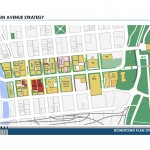
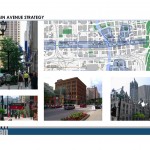

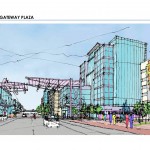

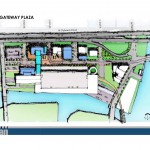
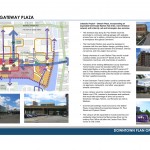
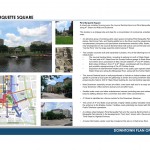
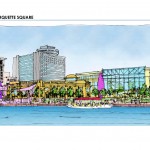

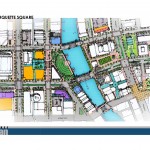
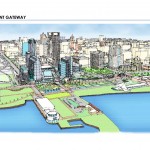
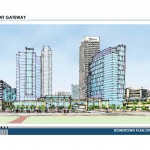
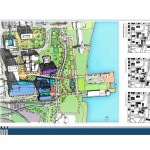
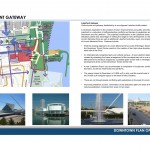
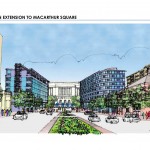
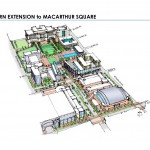
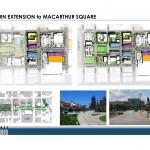
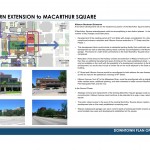
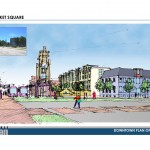
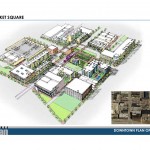
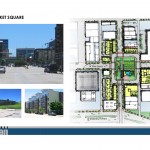
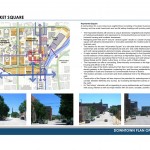
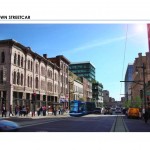
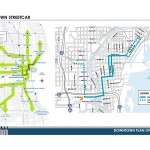
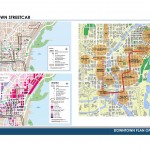
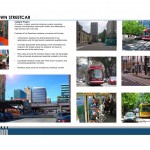
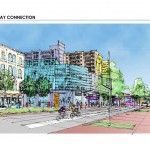
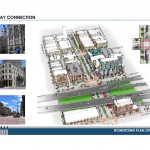

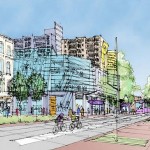















Lots of this stuff looks awesome. Silly question, is there a timeline for any of it?
Not a silly question at all. I’d love to know when work is supposed to start and what the projected finish date is.
Well last time they put together a plan like this it was 1999, and some of the realized projects are the Riverwalk, the Public Market and the Intermodel Station. Those were completed what…maybe between 3-5 years ago?? So I’d say look for the Haymarkey Project and Intermodel Station projects to be completed within the next 2-3 years and longer for the others.
Just speculating though…
I am really digging the reconfigured ramps for the lakefront gateway to allow for people coming off the highway to choose whether they want to go north or south to the third ward. The Station Gateway Plaza looks really doable after the streetcar line gets built, and Haymarket square looks interesting. Are they thinking of making the loop one way, I think it would be nice if they could keep the streets narrow. They should look at the New East Side development in Chicago for what a nice square looks like.
Overall, it looks good. There are quite a few references to taking steps to improve pedestrian friendliness. I would like to see the various pedestrian-friendly features (removing right-turn islands/ramps, adding curb build-outs at intersections) become standard practice when streets are rebuilt.
AMAZING!!! I live in Florida and am moving to NYC, but if Milwaukee continues in this direction, I could be drawn back! Downtown has made amazing strides in the years I lived down there and everything in this plan would put us on the map! My favorite is lakefront gateway, for sure, as that was my favorite part of Milwaukee to begin with. Keep it up, and lets cut through the red tape to get this done!
Good start. Build Ultramodern and Build Big. This is America and we have to do this or we will trail behind others in the world.
This is a great plan–very specific and credible. You know it will be done. The Haymarket and brewery areas are key to growth and momentum connecting with the MLK area, Brewers Hill, Halyard Park, Riverwest, the Beerline and Lower East side.
Unfortunately all plans are not created equal, and the plans for these areas adjoining to the north pale in comparison to the downtown plan. Bronzeville was DOA, but we are still carrying this corpse in the Northeast Side plan alongside much other vague, wishful thinking and already compromised specifications:
* The North Ave. repaving that’s now underway and behind schedule shows no influence from the NE Side plan specs. The area where it intersects Holton is in a deplorable state, and prior streetscaping there may be simply ruined by the repaving. That prior streetscaping work was never completed either. DPW left poles and bases or simply holes for harp lights in several locations.
* An unwanted gas station with an expired construction permit that was granted by BOZA without a sitting alderperson is going in near the Center/Holton intersection to create a gas/c-store saturation from Capitol to North over against the objections of residents.
Strangest of all to me is the absence of any specific reference to the Reservoir/Holton/Brown/Glover area on the Holton bridgehead that overlooks downtown and connects 5 neighborhoods through the street grid, bike paths, and riverwalk. Yet the Brewers Hill stretch of Resrvoir is obstructed in its view of downtown by a jungle of weed trees that cover an unfinished trail. Simply sending over forestry services for a trim would change the economics of that intersection which nobody has ever seemed to notice. The NE Side plan simply says “There is potential for the development of commercial / mixed used nodes at Burleigh Street, Locust Street, Center Street, Brown Street, Keefe Avenue and North Avenue which would provide a more active commercial corridor.”
Now at Brown and Holton we’re to have WHEDA homes as the highest and best use? What’s the message here to residents north of downtown?
@Alex – Exactly
This plan is excellent, especially the lakefront gateway center (it almost looks as though MKE will get a central business district/financial center).
It’s hard to tell when looking at the birdseye view of the Lakefront Gateway but I hope it includes a much more pedestrian friendly way to get from the Public Market (or the Third Ward in general) to the Art Museum. Kudos to the city for looking forward. On a vaguely related topic, does anyone know what became of the flip art installation on E. Wisconsin Ave.? I don’t recall seeing anything there yet.
The residential focus is nice, but is it wishful thinking? What’s the vacancy rate? Why did DCD previously believe downtown could take 1,000 new units a year? What’s to be done about the “used condo” market that’s competing with new construction and limited demand?
I don’t think limited demand for Downtown housing will be a problem. There isn’t unlimited demand, but demographics are heavily favoring empty nesters over the next 10-20 years. The area is already a huge pull for the 20’s/30’s age bracket, so this will spur investment in high value condos and rentals alike.
If anything, resold condos give first-time home buyers a toehold into the market. Letting people that would not otherwise consider the city, an opportunity to live in a great area.
I’ve seen a lot of skepticism of “that whole condo thing” from old-time residents of periphery neighborhoods. I’m not sure if it’s a generational scism on what homeownership means, feeling that Downtown is some type of threat to their neighborhood or if it is genuine concern of the best way for Downtown to develop.
And after 10-20 years, assisted living will be the next big thing? That won’t work downtown. 😐
The skepticism about condos is the skepticism of the other 97% of the city, or at least those literate enough to read the spray paint on their walls. If the historic neighborhoods are being deprioritized while new, revanchist downtown areas are prioritized, it is as you can see implicit in your own comment–a choice between two models of community. If your neighborhood ethos is largely based on the equation children+schools=community with a future, downtown represents a rejection of that. It represents a rejection of the middle class as we have known it.
It’s not about not bungalow owners believing condo ownership is an inferior form of home ownership; it’s about parents not believing that an economy based on childlessness is good for them. Where’s the serious, credible emphasis on good jobs, livable neighborhoods, and functional schools? It’s about disbelief in leadership and planning that has no vision or drive for these things and a sense that the neighborhoods have been lied to and set up to take the biggest hits.
The jobs are still moving out of Milwaukee, especially good jobs. Commuter movement is in a long term trend outward. Educated people in particular move out of or never come into Milwaukee. Having (school age) children takes people out and keeps them out. Even if you can afford the costs of bypassing and compensating for the systems of sustained mediocrity and failure, the question “why?!”” faces you every day.
A friend suggested to me today that the residency requirement for public sector employees may be the city’s biggest fungible asset–the backbone of a closed loop of a poorly functioning economy that might collapse without it. After such a collapse you might see a thousand flowers bloom, but living through that collapse in the city neighborhoods would be …unpleasant.
Ultimately if you see Milwaukee’s problems as being as profound as they really are, and how embedded they are in social divisions based on location, income, and race–all of which tend to by interchangeable status symbols in an apartheid city–the real success of downtown is the success of the 2.5% over the 97.5%, and this to me is not sustainable. The math of simple self-interest points away from the city for the vast majority of people.
Obviously I struck a nerve about how some people view Downtown development. The emotion filled response that dodges any facts pretty well confirms it.
The same dynamics holding those neighborhoods back, are the same forces protecting systems of sustained mediocrity (cough… MPS… Milwaukee County… cough). I would say that the ‘democratic’ systems in place governing these and other areas have led to a tyranny of bureaucracy without any real accountability.
Your comments make it obvious that you consider Downtown and neighborhood development to be a zero sum game. Also, you conflate job creation and healthy neighborhoods; job creation helps but is not a requirement to have strong neighborhoods and a strong Downtown. Your lack of support for Downtown development reeks of a ‘crabs in a bucket’ mentality.
The icing on the cake is the apartheid reference. Do you really think that the onus for integrating the metro area rests on the city of Milwaukee and Downtown in particular?
Relax, I’m not attacking the plan, just the sense of priorities it indicates about the city’s health and future due the the credibility gap between the downtown plan and other recent plans that are being violated daily because leadership, concern, priority, and money is indeed “zero sum.” If this was not so, the mayor of Milwaukee would not be campaigning by taking city votes for granted while indicating to the rest of the state he will not be sending us boatloads of cash if he’s elected. And as you well demonstrate, the “I just want my downtown back!” mentality resents all other competing attitudes of entitlement because it IS about limited resources and attention. “Crabs in the bucket” = people who don’t want to be the zero in your sum.
Let’s just accept social Darwinism as rather “natural” especially where efforts to mitigate it have been weakened or have actually made social divisions more pronounced and harder to navigate. Good areas tend to get more and better of everything, which they may do on a more or less equitable cost sharing deal with worse off areas. This is the only thing that really justifies unions and revolutions. I’m not suggesting it should be changed or could be otherwise, and I don’t want to moralize about “the rich” and “the poor.” I’m just reminding that poor distribution of value is a problem for the whole city if the imbalances go too far for too long.
Blaming MPS and the County doesn’t get the City (government) off the hook or make the problems go away. The city — as in the actual community — is deeply affected by all three. Sure the County and MPS are less accountable and more of a mess as a result — that’s part of my point. MPS is a huge problem even for people who don’t have kids in it. Billions in unfunded liabilities is no joke. For the massive number of kids who are in MPS, it’s critical, and they’re critical to the city’s future–far more so than the golden years boomers who may or may not create a vibrant condo market one day, for a little while. I have no doubt that if its constituency changed, MPS would change. That is not going to happen as long as MPS with too few exceptions is not replicating its successes. The successes have a lot to do with viable middle class neighborhoods, and they do owe something, sometimes, to smart, prioritized planning and development. Milwaukee does not seem to praise, support, or even see value where it does exist along these lines. If it’s not some big, sexy downtown or waterfront project with big private money behind it, nobody gets excited.
These are not simply emotional points made by a crab in the bucket, although let’s not say emotion is always a bad thing in communicating an idea, especially if motivating people is a goal. It’s often emotions of affection and loyalty that keep people in relationships (or places) that are not strictly logical or the most self-interested choice. Another emotional moment may make them change course completely. People take risks or endure hardships more for emotional reasons, but underneath the emotions we’re all still doing the math and paying the bills. Something on an emotional level keeps you going or proves to be the last straw.
There are people who are in Milwaukee because there is a residency requirement for their job, and there are those who choose to cross a line they draw in the sand. A lot of politics and policy is for or about the former group–not so much the latter. I think it’s because they are not vocally “crabby” enough. To me the persistent discrepancies–like good versus fake area plans–is the type of thing that should make people mad, because it is a logical basis to conclude the city does not have their backs.
If you have any factual basis to discount my apartheid reference I’d like to know what it is. The geographic, racial, and socioeconomic separation of top from bottom, edge from center and very little in between is a visceral fact that can only be denied by a very selective, insular set of associations and travel in this city not to mention a lack of historical awareness.
You don’t know me, but I’m riffing on a lot of ideas a mutual friend has helped me clarify because he has a great mind and is a good writer. Nate and I don’t agree or feel the same about everything, but if he chimes in maybe you’ll consider taking a more generous consideration of the crabs. In fact, in issues where consent and dissent in the order of a society is concerned, a majority of crabs in your bucket is a very serious problem that will not be treated sensibly by that good old Anglo-American bromide: “optimism.”
You’ve got more in that response than I would care to respond to in one post, let alone one sitting. I think your ideas could use a better outlet… I’m sure they’re always looking for the occasional guest blog. At least then it would be more than us going back and forth about what we thing x means to y.
I don’t disagree. I’ve written this sort of thing in many places, many times before and am pretty tired of it too. I hope I answered your question though. I do not think it falls to the city gov or the downtown area to “integrate” the city. I don’t see integration as a useful concept or something you can have as the end result of a policy. I think socioeconomic diversity and a crunchy economy of well distributed value is the only tide that really raises all ships–and it’s about more than money and pigmentation. Those old battle lines are more in the past than ever but there is no Obama or better yet a Cory Booker here to capitalize on it. What happens in their absence is a relentlessly myopic focus on the demographically attenuated entertainment zones that is not even slightly complemented by planning for adjoining areas.
The downtown-river-lakefront focus worked in the 90s and has been the only big thing to work and stick since then, so why not continue and repeat? Why not indeed, but there is so much more that could have been, and resting on laurels is a self-deceptive way to convince yourself you’re winning not just one battle but the whole war. Accountability too means making that type of point and sinking it deep enough into the tax-funded whales at any opportunity until they feel it.
Hey guys.
One short, intentionally provocative point is that a majority of those living east of the river share no practical differences with the suburbanites who write the ignorant JS comments and stay away from the inner city like it’s their job, other than a desire for dense living and a willingness to tax themselves.
The other point is that metro Milwaukee is already “the next Detroit” with a few nice middle class public employee pockets away from downtown. We’re in collective denial about that. Milwaukee will never be great or even competitive until some of the fundamental issues are addressed, which all go back in one way or another to
1) apartheid-level segregation that most people here couldn’t care less about if they’re being honest,
2) an UNUSUALLY toxic racial climate which people here either don’t understand because they assume it’s like this everywhere, lash out against in unproductive ways (race card), or have never actually been exposed to due to self-segregation and closed-mindedness. Among other things, this permanently and significantly drags down economic potential, keeps businesses and tons of people like me away (other than Dan’s emotion, it’s extremely hard for me to justify why any educated minority would want to live here, that’s why most of us leave, which of course just worsens the racial climate), and makes it impossible for metro Milwaukee to assert itself in the capitol,
3) a grand bargain with public unions (residency in exchange for fiscally crippling benefits, a tax island, and less than adequate performance in the case of MPS) that has served as a proxy for dealing with Milwaukee’s real problems and has slowly but surely dragged us down. Trade residency away and use the union concessions to actually attempt to deal with the city’s real issues. We’ll be pretending until we do that. We can contractually force people to live in the city, but we can’t force them to invest in the city. The above market-price money spent on them leaves the city and never comes back, leaving us stuck paying for pensions for people scattered throughout New Berlin and Arizona. It’s a lousy investment, but it’s easier than addressing the real issues. It’s keeps Milwaukee on the edge of the cliff. A change could result in a fall off the cliff, but it could also result in Milwaukee moving further up the mountain. The extent to which people are knee-jerk afraid of any mention of getting rid of residency is the extent to which they’re happy with mediocrity and unwilling to take a risk that could someday allow someone to examination Portland’s success as potentially applied to Milwaukee without sounding like they’re living in some bizarre fantasy land where the city west of the river doesn’t exist.
The recent look at metro Milwaukee’s college graduates (http://www.jsonline.com/business/96226434.html) is all we need to look at, really. None of that will ever perceptibly change until Milwaukee grows up and addresses its real issues. The real issues require a willingness to genuinely engage and know the real city (west of the river), and the play city can’t ever have enough growth to overpower the real city’s issues, so please everyone, stop pretending. If you’re happy with a permanently mediocre-to-failing city and metro, continue to ignore the real city.
@Nate – I will take your bait, as someone who lives East of the Milwaukee River. I think it’s worth largely ignoring your assumption that East Siders are like suburbanites (and that suburbanites must be ones commenting on the JS). I see how you could maybe find a few similarities (i.e. they’re more likely to be wealthy than someone who lives near 15th and Walnut), but it’s incredibly unfair to assume there are only two groups. There are inner-suburbs, outer-suburbs, home owners, renters, those with kids, those without, and the list goes on. It’s apples to oranges to pears to lettuce.
I’m pretty sure we don’t have apartheid-level segregation in Milwaukee. The mix of races in my apartment building proves that to be nothing other than a Sykes-esque proclamation.
I can’t speak to your second point, other than I don’t think the comments seen on the Journal Sentinel reflect reality by-in large. I can’t name any businesses that have left (or haven’t come) or people who have fled for racial reasons, but I don’t have the right perspective and opportunities to actually know that for-sure.
I’m interested in hearing a lot more about the residency requirement idea. The only way I can conceive of removing the residency requirement is to get a lot back in terms of pension funding (i.e. converting it to a 401K system). Does this make segregation better or worse? I don’t have an answer there. Would be interesting for the Public Policy Forum to do a study on cities that have it versus those that do not.
I take issue with the fact that west of the river is somehow the real city, and anything east of the river must be play land. They’re both pieces of the whole. Certainly a donut hole economy is not productive, but how do you break it? I’m all for the ideas of the proposed SEED school or something along the lines of the Harlem Children’s Zone (of which the latter I know admittedly less than I probably should). Those systems seem to be the ticket to helping those who are currently failing in MPS. Mayoral control seemed to be a step in the right direction, unfortunately it stalled for a lot of different reasons.
At the same time, you can’t fault the City of Milwaukee for plowing ahead with initiatives like the downtown plan and streetcar. You can only ignore your strong neighborhoods for a short period of time before they to become weak neighborhoods.
It does seem that the City has been weak at planning for the edge neighborhoods (edge of downtown). The Haymarket Square aspect of the downtown plan starts to nibble at that, but there is a lot of work that could be done with better planning for Harambee and some neighborhoods just west of the I-43.
@Jeramey: Agreed on the rest but a diverse apartment anecdote over against census tract data? Compare Chill on the Hill with Skyline Music in terms of crowd pigmentation. That is not a knock on Bay View, just an observation of a fact. Similarly, Riverwest’s diversity is not a laurel to rest on as long as it has high profile violent crime. I have friends and many acquaintances of all kinds who have more or less intentionally moved away from racially diverse areas because they couldn’t handle the stress of it anymore. Diversity in a city without a lot of middle class minorities is tough on the psyche of a good person who wants to do right to be engaged and protective of their community but not a prejudicial jerk. This is true no matter what box you check for “race.”
You’ve seen those numbers and maps that show ethnic distribution, right? It’s enough to look at the distribution of homicides on the map the JS has in the “data on demand” section. The big cluster of dead black males on the north side for instance–that’s the defacto prison away from prison that exists in the middle of Milwaukee. Trim it back, and support solid minority and mixed neighborhoods–that will change minds and bring people into the city. Support downtown, and support growth on KK — support it all is all I’m saying.
Neighborhoods that aren’t defined by the rules of the black/white tipping point are rare here, and I used to think the ones that exist were valued by the City for that reason and likely to be regarded as a model and goal. Over time I learned they’re not understood and devalued. They’re left to drift without a plan or protection from slumlords and speculators unless they get organized and fight for themselves. Some do, and that’s good, but it’s also shameful, backwards, and counterproductive. It means the diverse and affordable areas that attract recent college grads are not a leg up in Milwaukee but a kick in the butt out the door, especially if they are minorities.
Personally all the young black professionals I have known in Milwaukee well enough to have this conversation with have said the same thing. There is no place for them, meaning a place where they aren’t going to get treated with hostility and presumptive suspicion. There’s not much of a black middle class in Milwaukee, and this is why–those who would build it leave. The same goes for the middle class in general–more specifically, people with at least a college degree who stay here by choice, not because they’re bound by a residency requirement.
Let me challenge you to find ways to grow and get more coverage from west-of-the-river areas and ideas. Go for geographic diversity and you will get every other kind as well. SEED was indeed a great idea that died. Did you write about it 1/100th as much as you wrote about transit policy? You have 1 article on Brewers Hill, 0 on Harambee, 0 on Halyard Park, 0 on Hillside, 0 on Lower East Side vs 98 on East Side and 108 on East Town. 72 on Park East, which I realize is important, but nobody lives there. People in those 0 areas are virtually downtown and have a lot to do with downtown too. Attention and writing coverage is a zero sum game, just like it is with planning and funding. In both cases, broad diversity and distribution are good things to aim for.
@Jeramey
When it comes to the treatment of the rest of Milwaukee, a caveat I was trying to have implicit in my statement but which I should have explicitly stated, yes there’s no practical difference. One group shows vitriolic neglect and outward fear of the inner city, the other group is artificially down for the cause in a way that shows benign neglect, and covers its fear with political correctness. The impact is materially the same. West of the river, where families and the real issues are, is definitely part of the whole. A huge part. My “real city” stuff was a snide response to the recently published “profile of Milwaukee,” which would lead a reader to believe that Milwaukee west of the river doesn’t exist or is otherwise negligible in importance. If I measured the care that eastsiders have of city issues based on what I see, I’d come to the conclusion that street art and postcards are more important than MPS and the myriad of “second only to Detroit” civic indicators that you can’t take a good look at Milwaukee without tripping over. I understand focusing concern on what’s in your neighborhood, but these other issues are orders of magnitude more critical to the future of the entire metro area, and impact everyone directly or indirectly. So if the purpose is the area’s future, these issues really need attention.
You’re arguing against Milwaukee’s segregation? Holding out the subjective experience of one building as proof of an argument while ignoring the objective fact that metro Milwaukee is the most segregated metro area in the country is actually Sykes to a tee. I’m not sure that someone who has experienced the city in its entirety, and especially the metro area as a whole, could attempt to say such a thing.
I can name lots of people who have fled Milwaukee for racial reasons. Friends and family members. I was in the same boat until a few years ago. If you did a survey of former black metro residents with an ACT score of above XX to see where they are and why they’re there, that would give you the proof. In the meantime, you can look at our abysmal record when it comes to per capita black professionals. As a proxy, just use private sector employees making above a certain amount, then compare to everywhere else. Another project for the PPF I suppose. In the meantime, the below stories shed some light:
Poor Race Relations Leading to Brain Drain (http://www.wuwm.com/programs/news/view_news.php?articleid=4671)
Editorial: The best for whom? (http://www.jsonline.com/news/opinion/29398129.html)
Strategies to stem the black ‘brain drain’ (http://www.bizjournals.com/milwaukee/stories/2004/07/05/editorial1.html)
Black brain-drain still a reality for city (http://www3.jsonline.com/bym/biz2biz/nov03/184282.asp?referral=http://www.jsonline.com/bym/biz2biz/nov03/184282.asp)
City’s mean streets hard on young blacks (http://www.jsonline.com/news/milwaukee/85577067.html)
The businesses leave or don’t come at all in large part because of our lack of an educated (and diverse) workforce and MPS. Suffice to say, I firmly believe that segregation and racial climate are at the heart of our workforce and education issues for reasons seen above and written by me elsewhere previously.
Not having the right perspective and opportunities to see all of this is precisely what I’m talking about. That is the benign neglect. I can empathize. Frankly, it’s incredibly easy to be blissfully unaware of race issues when your race isn’t the first thing that people see. In that situation, it takes an affirmative effort to see some of this stuff, and that takes knowledge of this stuff’s existence. In the other situation it beats you over the head daily whether you want to see it or not. That’s why I’m trying to point these things out.
As far as residency, I completely agree that the concessions have to be significant, and a switch to defined contribution would be tops on the list. Merit-based salary and job security for MPS would be 1A. Employee contribution levels comparable to the private sector would be next. If done right, you can increase salaries to attract mobile and better skilled employees while still saving a boatload of money. Use that money to decrease the property tax and make meaningful civic improvements to attract people here instead of forcing them here. It could also be optional, give employees the choice to live in Milwaukee and get the benefits, or live elsewhere and take cuts. It’s definitely something for PPF or probably a private economic consulting firm to study closely. Revenue diversification would also be ideal, as I’ve also discussed elsewhere, and maybe that becomes more possible when combined with the entitlement modifications. I do hope that something like this at least gets a good faith attempt in the next decade. It’s sickening to watch the slow decline.
@Dan – My apartment anecdote was admittedly far weaker than any census data. Apartheid though implies absolute separation, and my apartment note just shows that it’s not absolutely exasperated. Far too much segregation though.
If a black middle class is the missing piece (or at least a key missing piece) in making race relations better in Milwaukee, how do we as a city foster such a group? What are the stepping stones? Something tells me Bronzeville doesn’t make that short list.
Amusing look at our article numbers. The numbers are skewed slightly, because the additional neighborhood breakdowns weren’t introduced until recently (East Side used to encompass everything north of Ogden). The point stays the same though.
In our defense, we’re not aiming to cover the day-to-day of neighborhood’s as much as we are the urban built-environment. We have a long list of articles we hope/plan to write envisioning the growth of the neighborhood’s you mentioned, but they’re incredibly more time intensive to write as they require a lot more planning and blue sky thought than simple reactions to existing proposals. As time passes we’ll broaden our coverage area to the areas that border the northwestern corner of downtown (Alison will certainly appreciate it so I quit verbally detailing my plans to her whenever we walk around Hillside, Haymarket Square, Avenues West, Brewers Hill).
Our coverage of downtown hasn’t been as detailed as I would like either, so it’s not that we have all kinds of extra time. Stuff falls through the cracks that we would like to cover in the areas some would say we cover too much.
I learned about the SEED idea too late to be a quality advocate for it, was disappointing to watch it get snubbed in the state budget process.
Jeramey– Thanks for taking the extended poking so graciously. Yes, burying the Bronzeville plan and coming up with something that is historically respectful and rooted in the diverse present reality of this area is a necessity. There are a bunch off neighborhoods there that are working together as a community, and they have good relations as a result of that cooperation. Just let people cultivate their common interests as residents of the same area and you will usually get positive mixing and interaction among groups that otherwise rarely mix in the metro area.
Stepping stones to stable, heatlhy, diversely diverse neighborhoods could be figuring out the highest impact 3-5 practical, achievable goals and then figuring out how to make them happen within 4-5 years. Ask for resident leadership and volunteerism that matters–it’s there, so ask people to pull weight with their public officials. Set a timetable, and let failure be a real possibility. Level with people, let them know where they stand. Make it clear who’s got to do what to move the ball forward on something as “simple” as a complete-the-street project. Same strategies for policing and neighborhood services. More interagency cooperation–the DA, MPD, and DNS can work together with residents in smarter ways.
Writing matters, any public square type of involvement matters. Being advocates and conversation leaders matters a lot. You and Dave do that really well. Of course it’s not all on you then to make up for the voices and stories that don’t get much exposure in the increasing media and public discourse deficit. Yet anyone who finds a good way to represent the challenges of being young and any color in Milwaukee, or of being a person who fights for a block, a community garden, a new business, or a school will be doing the city a service. Maybe there are ways to collaborate with 88.9, TCD, and others who have similar interests. It doesn’t have to be big stuff–little things a lot of people do have great effects.
@Nate I thought that was you who had commented on the Milwaukee article. And no I didn’t write about Milwaukee’s problems in that article, the article was to an extent promoting Milwaukee from a urbanism (built environment) point of view.
And yes, guys we don’t often write about MPS, as for one I don’t believe I have the answers or especially well formulated answers yet (some ideas but) to do a good job with it.
Anyhow, I’d like to point out the downtown plan, isn’t about MPS, MPD, or no not even Riverwest… it is about the built environment in downtown Milwaukee. And quite frankly I believe building a better downtown helps all of Milwaukee (note taxbase creation and use). I bring this fun stat up all the time, the top 10 condo projects in the 4th district pay more in taxes then two Aldermanic districts, so yeah I think building a better downtown helps all of Milwaukee.
@Dave
I didn’t expect you write about Milwaukee’s problems in that article. I just thought that a profile of Milwaukee would be about Milwaukee, including areas other than the east side and downtown. Unless this is a distinction without a difference to you I guess.
I think the downtown plan is great, never said otherwise, and I’m proud of all the success that the downtown area has had. I’ll stand by the point that its growth will never overpower the city’s largely ignored issues, property value factoids notwithstanding. I’m busting chops with love 🙂 Bottom line, this city does not have a good future with the level of isolation between groups that currently exists, and that’s something the whole city (and metro) needs to address. You guys are just convenient targets, and Dan baited into this thread. I could just as easily bash myself over the head for mostly ignoring Milwaukee Latinos in my thoughts and writings, for example.
@ Nate — I wasn’t “baiting” Dave and Jeramey exactly. I think your point about Dave’s profile of Milwaukee for Urbanophile (http://www.urbanophile.com/2010/06/29/city-profile-milwaukee-by-urbanmilwaukee/) is the same as mine about the mentality behind planning and priorities in Milwaukee. Dave’s profile, UrbanMilwaukee itself to some extent, the Journal-Sentinel too–especially back in the late 90s–reads as if the authors think downtown is pretty much all that matters and the key to growth and success for the whole city.
My criticism is of this mentality which I believe is also represented in not the Downtown Plan per se but in the discrepancy between it and others. (E.g., it’s a good, serious plan, whereas Bronzeville is not, and much of the NE Side plan is already taking on the quality of a dead letter.) The limited range of vision in the downtown new urbanist movement is a related criticism, but it wouldn’t be as valid if there was also indication of serious planning for residential neighborhoods for middle and lower income families. The New Urban Optimism has relentlessly focused on condos and playgrounds for a demographic that seems unlikely to be replaced after it ages out.
I’ve watched a decade’s worth of benign neglect in areas that adjoin downtown — amid gains there have also been predictable and perhaps preventable losses to ownership and housing. There have been missed opportunities and bewilderingly big little failures like DPW’s streetscaping on Holton — a promised good residents had to badger the city into doing. It was done three years after it was funded, and then it was done horribly–a big F.U. to the area as far as residents are concerned. This type of thing says a lot–it says where the city will and will not have your back–and what type of person they want to attract and retain. It speaks to a myopia rather than a comprehensiveness of vision.
As far as the downtown new urbanism goes, it’s delivered very well. The increased tax base is welcome, but it does not seem to be going toward better schools and neighborhoods based around them. It does not seem to be going toward even a plan to deliver that type of progress elsewhere.
@Dave – I know you have a more comprehensive vision of the city than you expressed at Urbanophile, and I wish you’d share it more. I know you realize there are bigger problems or challenges than undeveloped land, brownfields, parking lots, a lack of rail transit and retail.
You did mention Bay View, Riverwest, Sherman Park, and Silver City as examples of “numerous great neighborhoods.” What do you think is great about them? Have you biked or walked around them all? Why do people choose to live in them? What kind of people? Are they areas where young families settle? Do they have populations and schools whose profiles defy the usual negative indicators? Where do we see residents trending toward being educated, diverse, and reasonably well off?
@Dan
I meant roped *me into the thread, I skipped a word there.
As far as a focus on the black middle class is concerned, the question of what to do about that is the million dollar question. Just acknowledging the problem and how critical it is for us to do something about it is half the battle as far as I’m concerned. If I’m looking at Milwaukee’s longterm future, that issue is near the top. I think it gets short shrift by civic leadership generally, changing that would be the first thing. PPPs are the way to go, as I know some businesses have acknowledged the problem and have taken to actively recruiting professional minorities on their own. I was thinking a PPP where participating businesses put up some jobs, recent graduates get some aid in repaying college loans in exchange for living here (or back here), and some of the local organizations, like FUEL, are utilized to help make them feel welcome. The black middle class will move back/stay here if they have 1) jobs, 2) the feeling that Milwaukee is changing and is ready to welcome them, 3) a little bonus incentive like a modest loan repayment, social interaction, or whatever else, to make a difference at the margins and in part to compensate for our weather 🙂 To the extent that any of this is already being attempted, fold it all under one heading, advertise it, prioritize it.
Alongside that, it’s so important to acknowledge our poor racial climate and to take affirmative steps to deal with it. Occasionally there’s murmurs along these lines, but Milwaukee needs a full-court press, as I think the segregation/climate is the huge longterm liability for Milwaukee when you compare us to otherwise similar metro areas. Easier said than done, I know race is a 3rd rail and it’s always easier to just ignore it for everyone. Milwaukee seems to often have a mentality of advertising over reality in order to rebut the constant negative of talk radio, but this is an area where we need to deal in reality, publicly.
In the 4th most impoverished city, this doesn’t make sense. I’m sleeping with a loaded military, under folded AK 47 under my bed. with an extensive military experience, I prefer to die not empty handed …